Kendra Wile
Advisor: Lancelot Coar
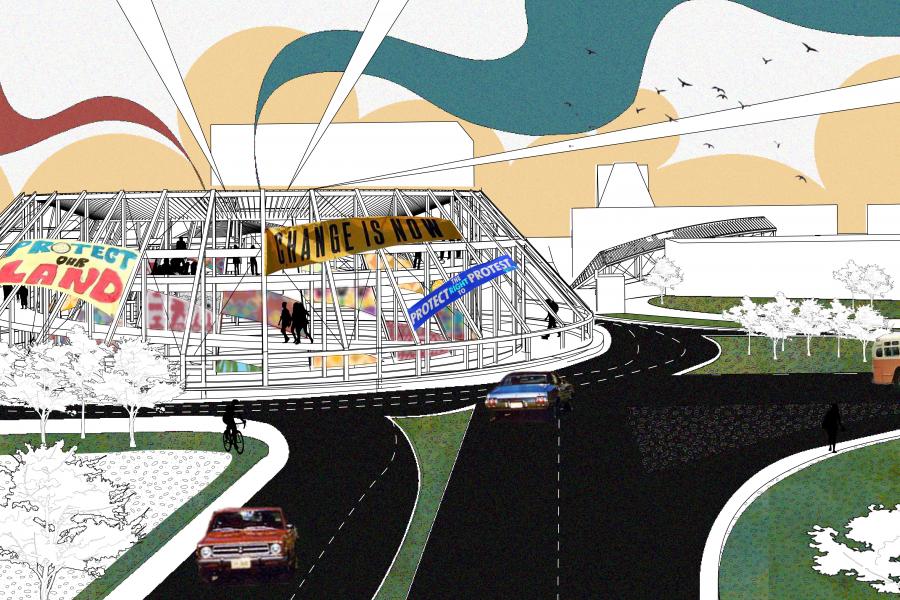
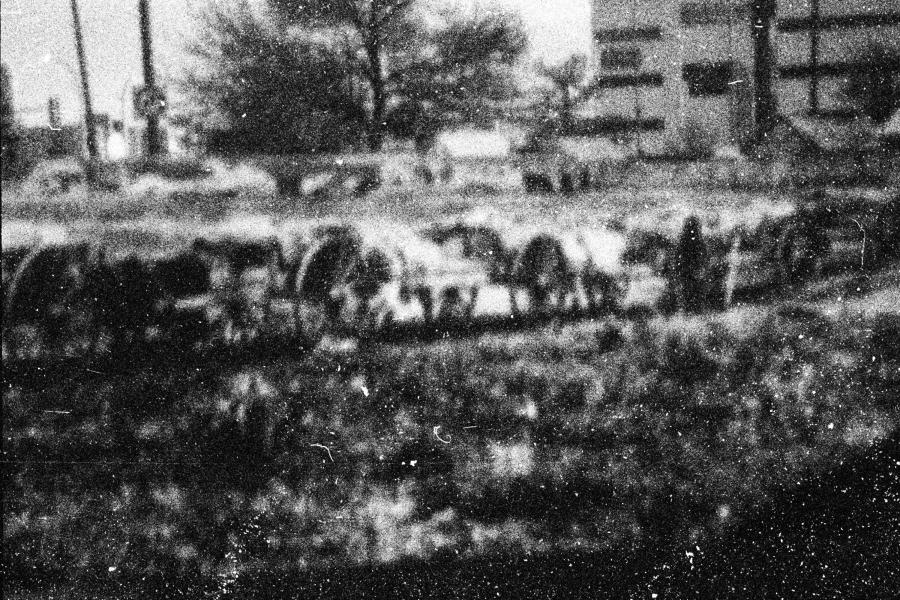
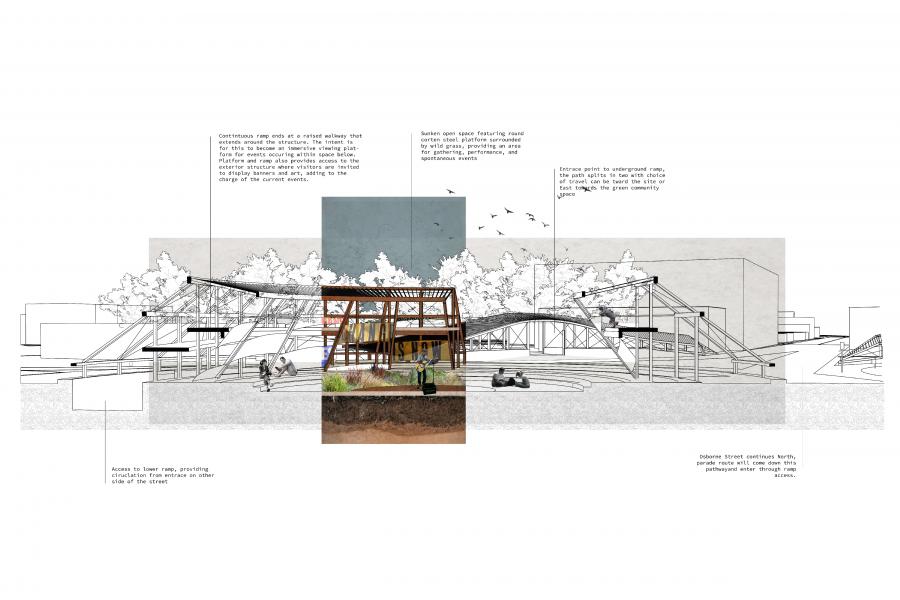
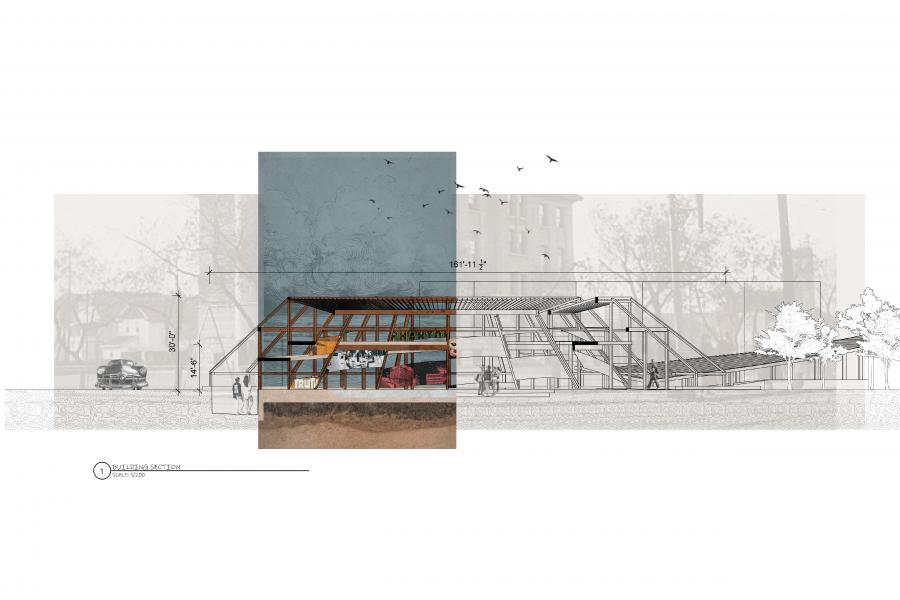
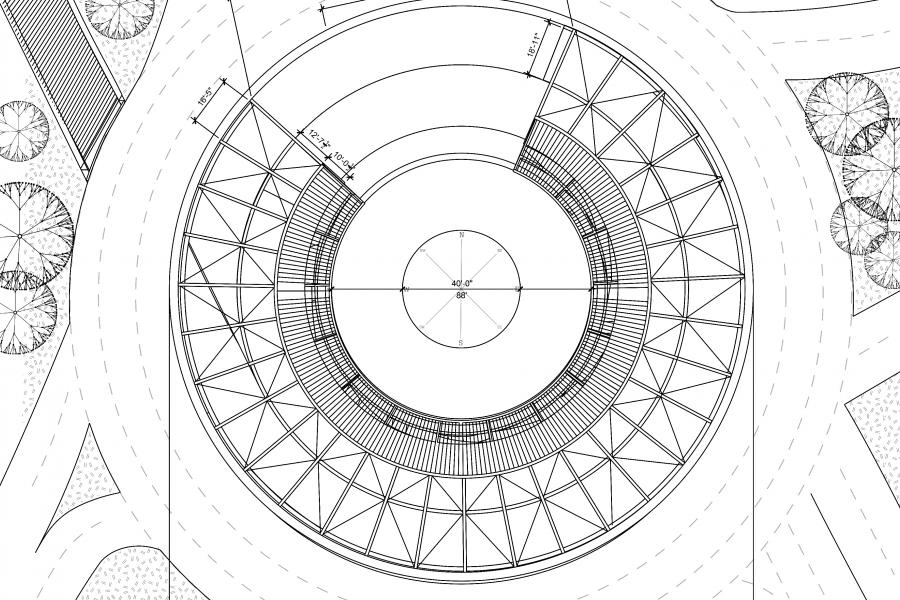
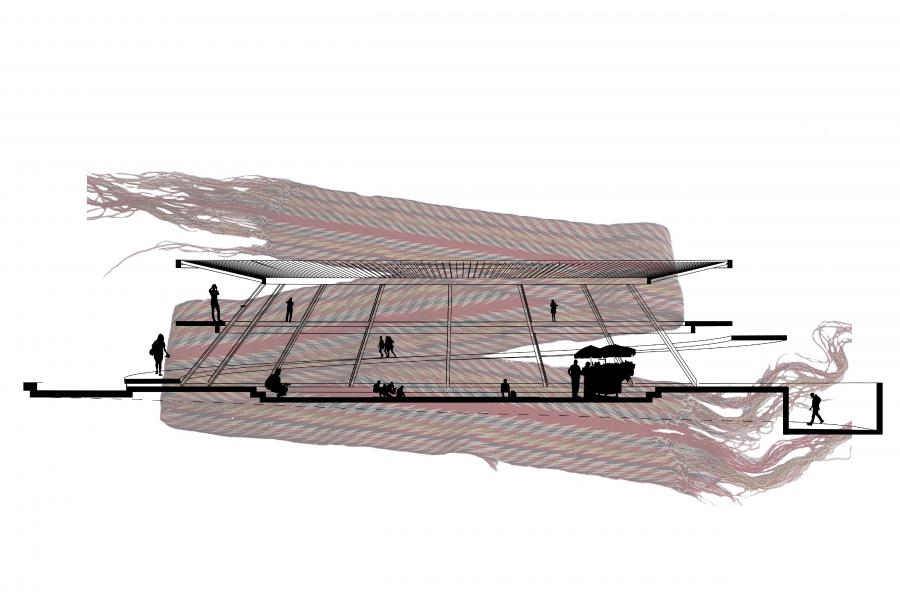
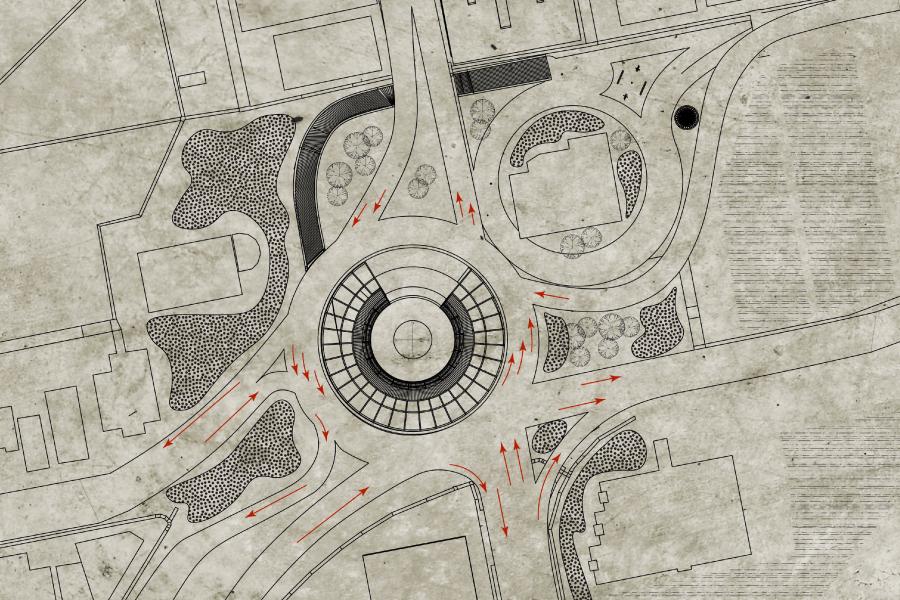
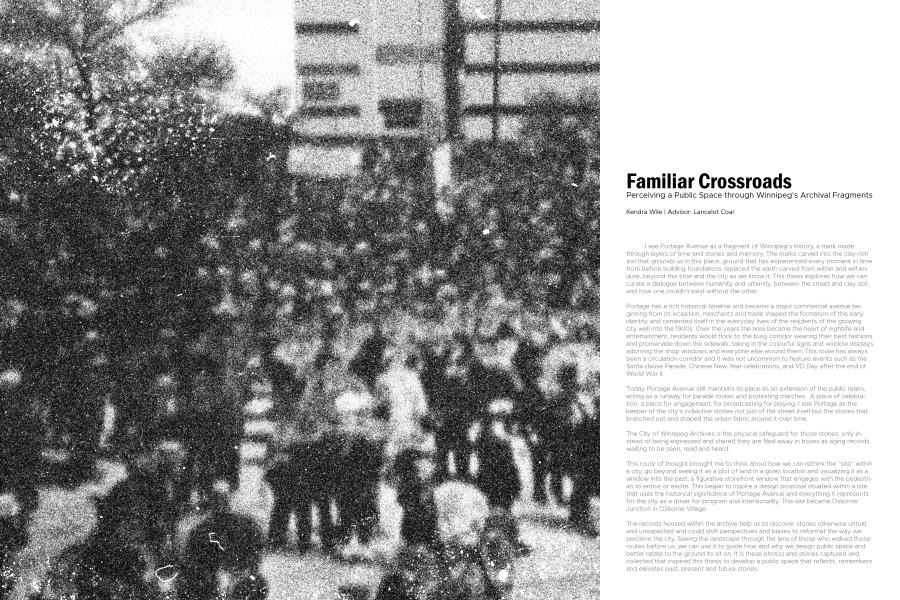
Familiar Crossroads: Perceiving a Public Space Through Winnipeg’s Archival Fragments
I see Portage Avenue as a fragment of Winnipeg’s history, a mark made through layers of time and stories and memory, The marks carved into the clay-rich soil that grounds us in this place, ground that has experienced every moment in time from before building foundations replaced the earth carved from within and will endure, beyond this time and the city as we know it. This thesis explores how we can curate a dialogue between humanity and urbanity, between the street and clay soil, and how one couldn’t exist without the other.
Portage has a rich historical timeline and became a major commercial avenue beginning from its inception, merchants and trade shaped the formation of this early identity and cemented itself in the everyday lives of the residents of the growing city well into the 1900s. Over the years the area became the heart of nightlife and entertainment, residents would flock to the busy corridor wearing their best fashions and promenade down the sidewalk, taking in the colourful signs and window displays adorning the shop windows and everyone else around them. This route has always been a circulation corridor and it was not uncommon to feature events such as the Santa clause Parade, Chinese New Year celebrations, and VD Day after the end of World War II.
Today Portage Avenue still maintains its place as an extension of the public realm, acting as a runway for parade routes and protesting marches.1 A place of celebration, a place for engagement, for broadcasting for playing, I see Portage as the keeper of the city’s collective stories not just of the street itself but the stories that branched out and shaped the urban fabric around it over time.
The City of Winnipeg Archives is the physical safeguard for those stories, only instead of being expressed and shared they are filed away in boxes as aging records waiting to be seen, read and heard.
This route of thought brought me to think about how we can rethink the “site” within a city, go beyond seeing it as a plot of land in a given location and visualizing it as a window into the past, a figurative storefront window that engages with the pedestrian to entice or excite. This began to inspire a design proposal situated within a site that uses the historical significance of Portage Avenue and everything it represents for the city as a driver for program and intentionality. This site became Osborne Junction in Osborne Village.
The records housed within the archive help us to discover stories otherwise untold and unexpected and could shift perspectives and biases to reformat the way we perceive the city. Seeing the landscape through the lens of those who walked those routes before us, we can use it to guide how and why we design public space and better relate to the ground its sit on. It is these photos and stories captured and collected that inspired this thesis to develop a public space that reflects, remembers and elevates past, present and future stories.
1. Russ Gourluck, Going Downtown: A History of Winnipeg’s Portage Avenue. (Winnipeg: Great Plains Publications, 2006), 5.
